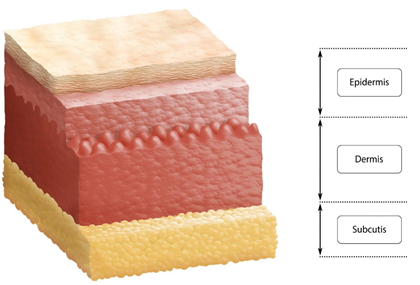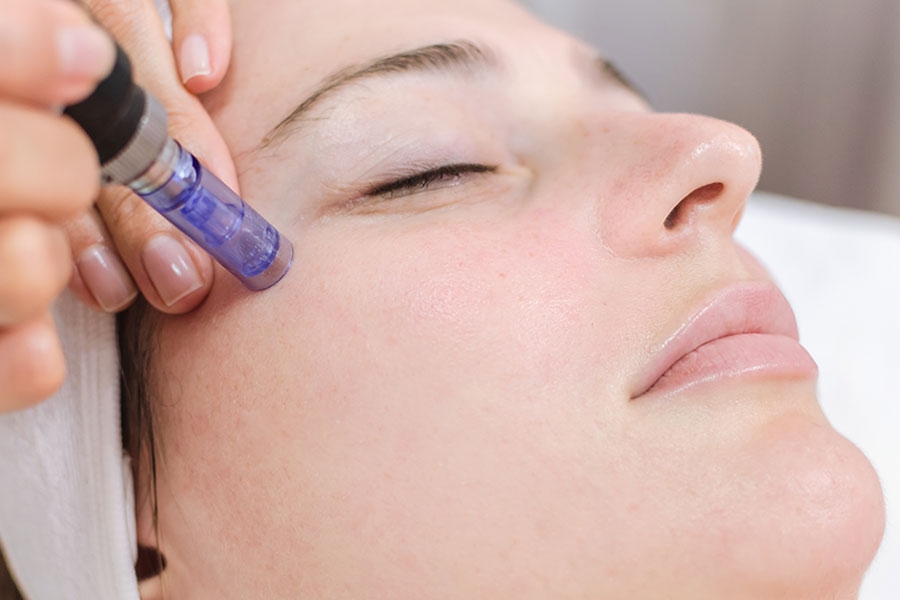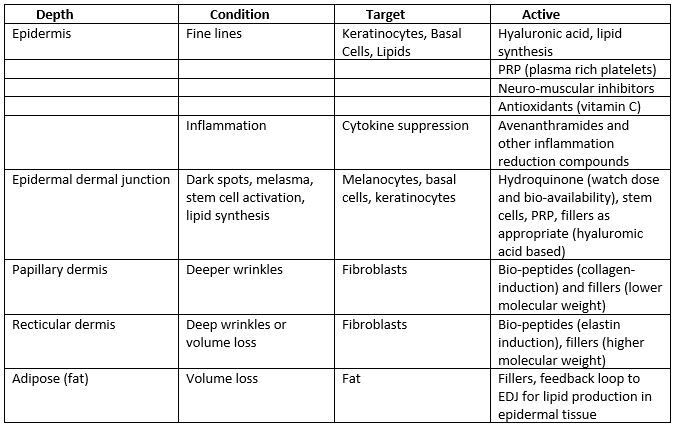Microneedling & Microinfusion: Contrasts and Optimization
Written by Robert ManzoMicroneedling and microinfusion techniques are often confused with regard to how each are optimized for the highest efficacy when used for the purposes of skin improvement and introducing active compounds into the skin. These procedures can be technique sensitive, as well. Understanding skin anatomy and physiology are critical in maximizing the effects of the procedures. Multiple clinical studies have been done in laboratories with specific and proprietary combinations of ingredients and techniques, which have identified an optimized approach to microneedling and microinfusion.
There are many microneedling devices on the market today, including manual microneedling, automated microneedling, scanning microneedling, microneedling with radio-frequency, and several more. Microneedling can be performed with or without the addition of serums for a variety of intended purposes. Microinfusion techniques are somewhat limited with regard to the device itself, with several brand and generic equivalents available. The microinfusion technique can be varied, but is essentially a stamping technique. This is always done with an infusion liquid of some type which can include a placebo (sterilized saline solution), serums, serums plus neuromuscular inhibitors, dermal fillers, topical anesthetics (lidocaine), and other skin enhancing injectables.
 PURPOSE
PURPOSE
The original purpose of microneedling was to apply a controlled injury to the skin with microneedles, in order to develop an injury response and, therefore, improve the aesthetic of the skin due to collagen and elastin or lipid synthesis at the injury site. The purpose of microinfusion is to deliver or flood the immediate area with an infused biologic or formulated serum to cause an effect in the skin in conjunction with a minor injury response. Microneedles are solid needles of varied depth, whereas microinfusion devices are a fixed depth with hollow microneedles which create microchannels and flood them with a fluid.
These techniques can be used to achieve the following skin improvements: fine line and wrinkle reduction, skin lightening, textural improvement, epidermal dryness, barrier repair, neuromuscular laxness, and eye area smoothness.
SKIN ANATOMY
Let’s start with a general skin anatomy discussion and where in the skin we want the injury response and the active ingredients to be located. Please see the following diagram. We can see that the stratum corneum, which establishes the barrier function of the skin, is the first issue, which is overcome by both microneedling and microinfusion procedures. This is what makes these techniques very efficient at delivery active compounds to the skin. Instead of active ingredients being 30 to 60 percent bio-available in the skin due to diffusion rates of topical solutions, they become 100 percent bio-available to the active site, if administered properly. This, in turn, activates or deactivates the skin, depending on what you choose to do. If you want to slow down the production of melanin, for instance, at the epidermal-dermal junction (EDJ), you would target the melanocyte in the skin at the proper depth and either infuse or microneedle at the proper depth.
Microneedling, in general, depending on the device used, will allow you to set a depth from about 0.20 millimeters to 2.5 millimeters, depending on the device. If you understand anatomy, you will, then, understand how to achieve epidermal improvement in skin (keratinocyte improvement, stem cell activity, melanocyte improvement, inflammation improvement, and so forth) by setting the device at about one millimeter depending on where in the face you are microneedling. If you go too deep, you are wasting active ingredients and if you go to shallow you do not reach it efficiently, so results will not be as effective and the client will notice.
Microinfusions, on the other hand, generally have a fixed depth of about 0.6 millimeter. Therefore, the ability to optimize the target layer or active site is limited. If you are targeting the deep reticular dermis which produces primarily elastin and secondarily collagen, then, depending on the part of the face you are working, you may fall short of the target site which is the fibroblast at that level in the skin. You may be able to reach papillary dermal tissue, but will fall short of the deep reticular dermis.
DEPTH AND RESULTS
As you can see, microneedling affords the ability to target cells of a certain depth and quality, so you can customize the approach. Microinfusion has a standard and somewhat shallow depth, but can provide microchannels for higher bio-availability, particularly to the epidermis and papillary dermal tissue. There are spas which mix a variety of cocktails, which combine neuromuscular inhibitors, fillers, active biochemicals, and other ingredients for microinfusion work. The level and reproducibility of the efficacy of those cocktails is unknown at this point. Almost all of the microinfusion containing a neuromuscular or filler cocktail will yield some textural improvement on the epidermal tissues with the result of providing a smooth surface for a three- to four-month period.
USEFUL TIPS
Numbing cream can be used depending on the depth of the procedure. Typically, microinfusion does not require numbing cream, but it can, depending on depth.
Multiple passes for microneedling can be used to affect difficult areas. Acne scarring or lip areas, for instance, can be treated with a second pass of microneedling, in which the needles are adjusted to a deeper depth to generate a high injury pattern and, therefore, a higher collagen and elastin induction. Blood may be drawn with this technique, so be careful to check you are in the proper location on the face and take the proper precautions.
The speed at which microneedling is performed and maintaining a precise 90-degree angle of the device to the skin is important in the overall efficacy of the procedure. Use good judgement with the speed and pressure of the microinfusion procedure used. Too fast or too high of a pressure on the skin can make the skin erythemic for longer than desired for post-treatment purposes.
Use a high quality, sterile hyaluronic acid gel for post care. Deep microneedling can produce nerve and vessel damage and infection. Pay attention to training and follow all requirements for infection control and hygiene.
This is by no means an exhaustive list of conditions, target cells, active ingredients, or techniques. It is intended to generate a thought process before a procedure is performed on a client, so as to optimize the professional’s approach to the client.
 Robert Manzo’s patented and proprietary cosmetic chemistry and product formulations are the result of over 25 years in the skin care development profession. He has conducted clinical research and developed specialized skin care products and techniques in Europe, the United States, South America, and Asia, affording him an expansive knowledge base to achieve personalized solutions for Skinprint’s clients. He has published articles on skin chemistry and the role of antibacterial and anti-inflammatory ingredients on skin and is a standing member of the Society of Cosmetic Chemists and the American Chemical Society. skinprint.com
Robert Manzo’s patented and proprietary cosmetic chemistry and product formulations are the result of over 25 years in the skin care development profession. He has conducted clinical research and developed specialized skin care products and techniques in Europe, the United States, South America, and Asia, affording him an expansive knowledge base to achieve personalized solutions for Skinprint’s clients. He has published articles on skin chemistry and the role of antibacterial and anti-inflammatory ingredients on skin and is a standing member of the Society of Cosmetic Chemists and the American Chemical Society. skinprint.com

